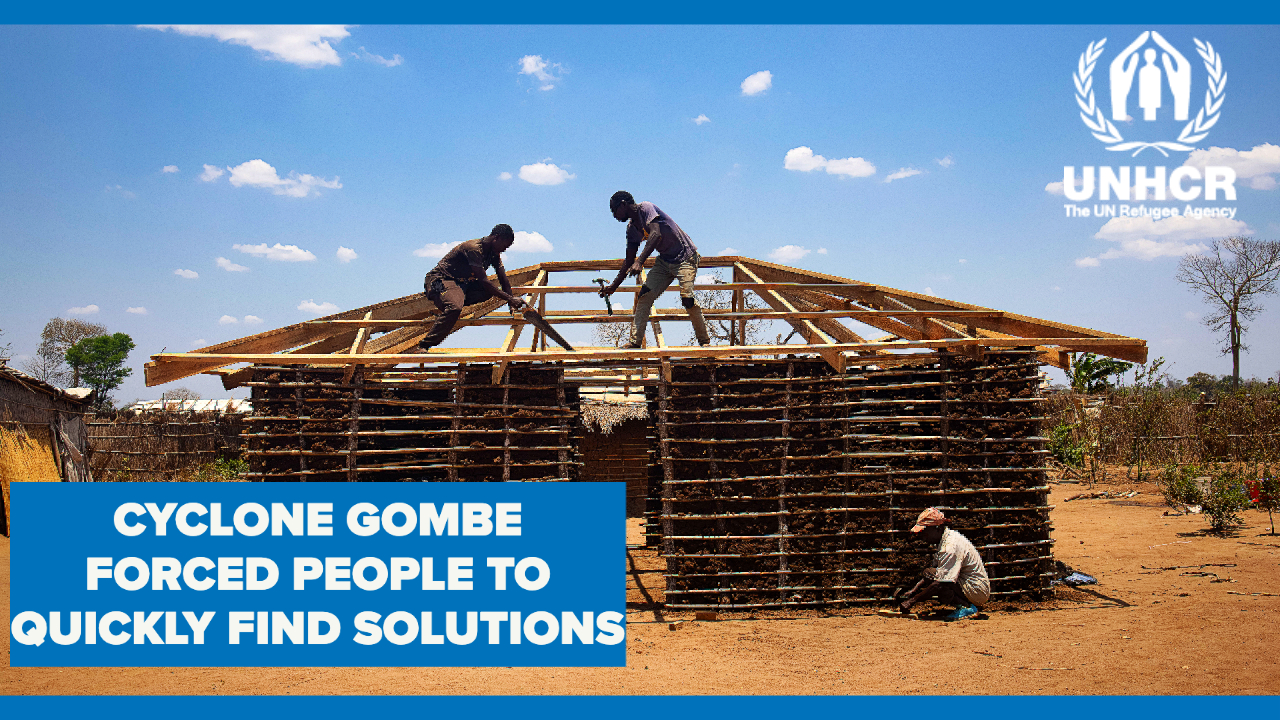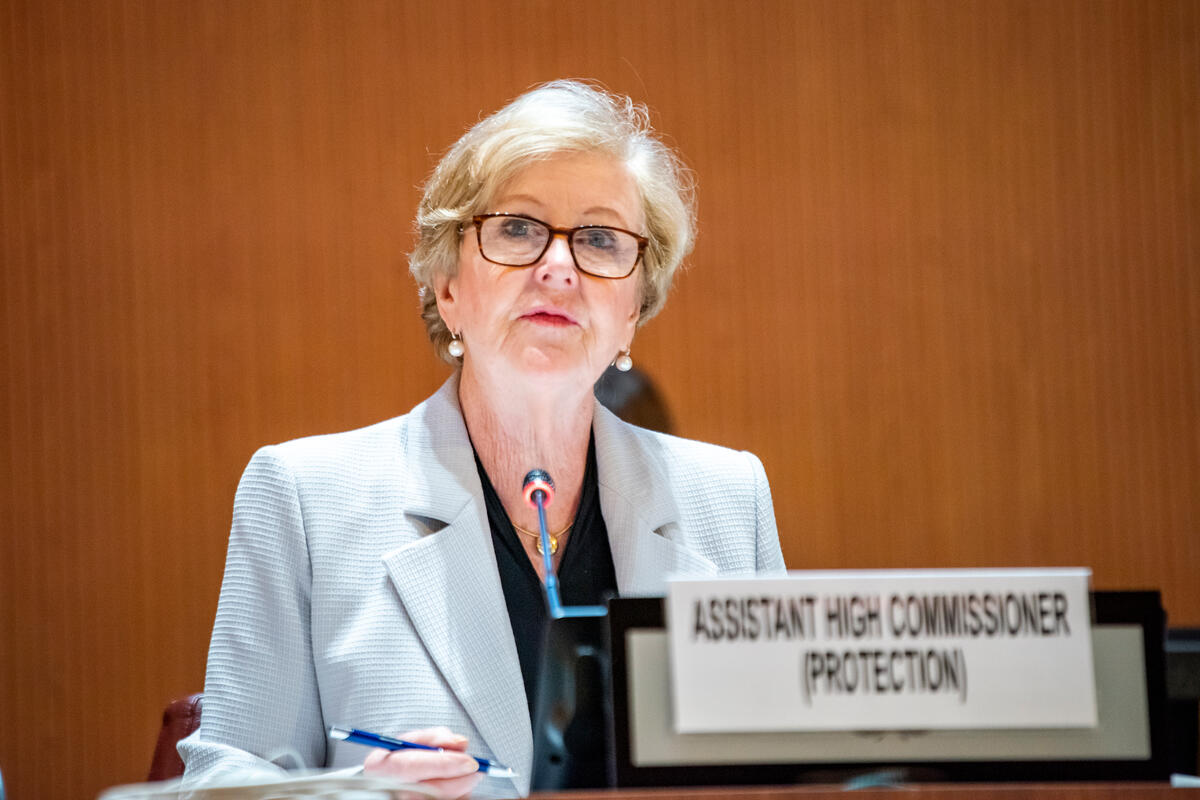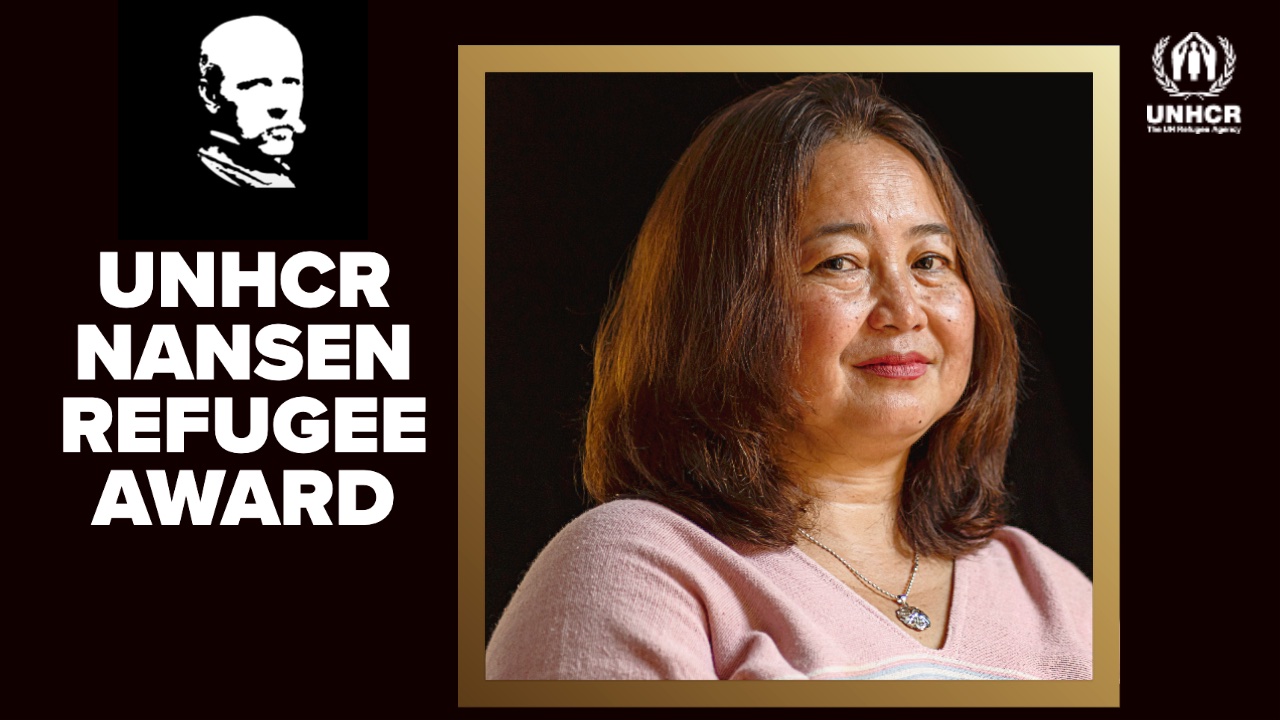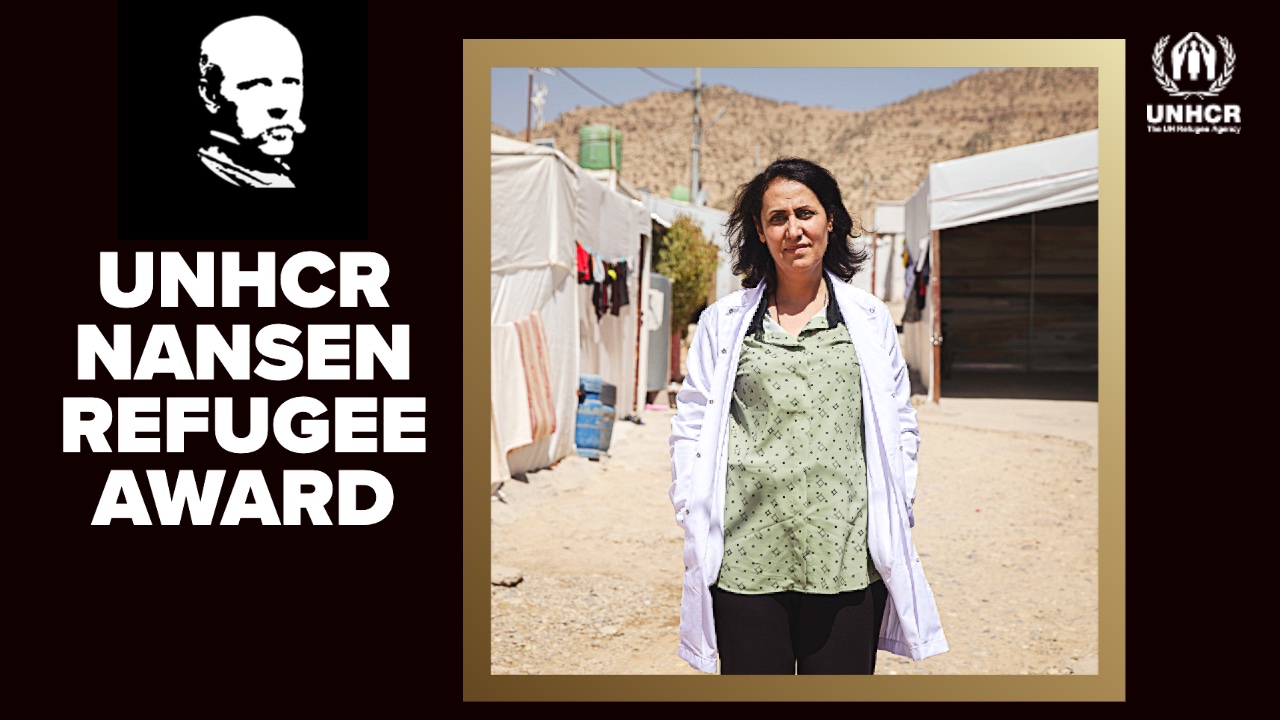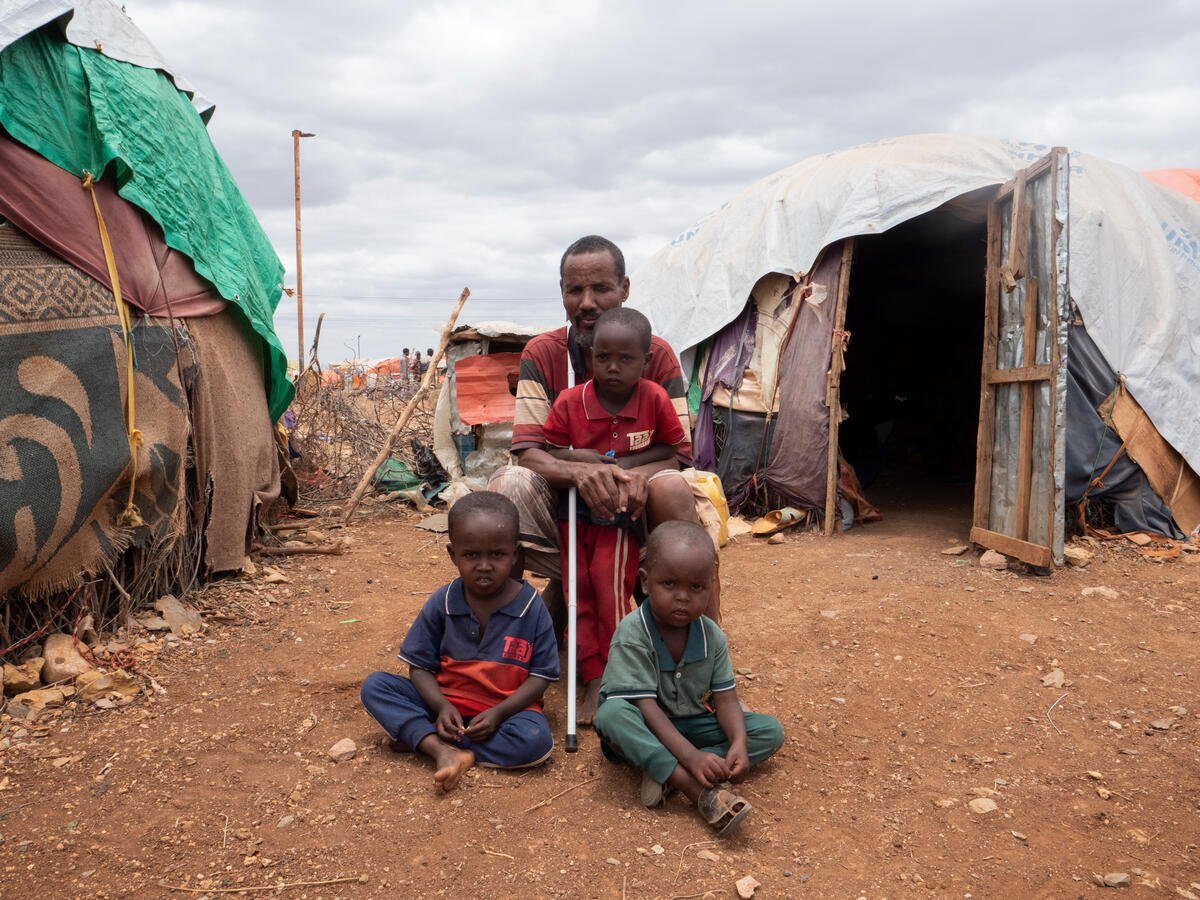Keeping displaced families safe amid surge in Niger violence
Keeping displaced families safe amid surge in Niger violence

INTIKANE, Niger – A year ago, when armed men entered Rissa’s* remote village in western Niger’s volatile border area with Mali, they began by ordering the villagers to hand over money, livestock and jewellery. Then the violence began. When they encouraged Rissa to join their group, the father-of-six knew it was time to go.
“They killed our leaders to make [people] leave the village,” 40-year-old Rissa explained. “The armed groups approached me to take part in the looting and crimes against the population. When I refused, they sent me death threats and also threatened to kidnap my wife and my children. I had to flee.”
Seeking safety and assistance, Rissa and his family made their way to the Intikane refugee hosting area in Niger’s Tahoua region, home to some 20,000 Malian refugees. When they arrived in December 2019, they were among the first Nigerien families forced to flee within their own country’s borders to settle in the area.
But a sharply deteriorating security situation over the past year has seen the number of displaced Nigeriens seeking safety in Intikane increase to 36,000 – almost twice the original population of Malian refugees.
It is a trend reflected throughout Niger’s Tahoua and neighbouring Tillabéri regions, which border Mali and Burkina Faso, and where continuous attacks and intimidation by jihadist groups have seen the numbers of locals forced from their homes rise from 78,000 at the end of 2019 to over 138,000 by January 2021.
The country’s plight is part of wider regional instability that recently pushed the number of internally displaced people in Africa’s Sahel region – which includes Burkina Faso, Mali, Chad and Niger – above two million for the first time.
Unfortunately, Rissa’s hopes that he and his family had found lasting safety in Intikane were shattered on the afternoon of 31 May 2020, when a group of 50 armed men on motorcycles swept into the area, killing two Malian refugee leaders and a host community leader, and destroying food, water pipes and other supplies.
“They were shooting just outside our door,” said Rissa. “My wife and I grabbed our children to protect them. They saw people crying, fleeing. Even animals were running around: it was like a scene from a war movie.”
His seven-year-old daughter, Tounfa, had a seizure during which she lost consciousness. Rissa and his family fled with around 7,000 others to Telemcés, some 25 kilometers away. Here, they received assistance from UNHCR, the UN Refugee Agency, until the army was able to secure Intikane, allowing both Nigeriens and refugees to return over the following months.
But for Toufna, the horror of that afternoon remains vivid. “She spends a lot of time lying down, talking to herself, fearing armed men will soon be coming for us,” Rissa explains. “She barely eats, often cries and shouts at night. But she sees UNHCR’s partner psychologist two or three times a week, and she’s slowly getting better.”
"It was like a scene from a war movie."
UNHCR leads the protection response to the displacement crisis in Niger, coordinating the work of 66 local and international organizations.
With the volatile security situation often making access difficult for UNHCR staff, the Agency also relies on a network of 47 protection monitors working with two NGO partners in Tillabéri and Tahoua regions. These local workers, some of whom are themselves displaced, make daily visits to families, report incidents, refer people for extra assistance and identify trends to help guide UNHCR’s response.
Mohammad* is one of the protection monitors covering Intikane. The 30-year-old law graduate makes the 50-kilometre round trip by bus from his home in Telemcés four times a week, making home visits, raising awareness on issues such as COVID-19, listening to people’s concerns and following up on specific cases including Toufna’s.
“Protection monitors like Mohamed visit us often,” Rissa explained. “Last week Mohamed came just after Tounfa had a panic attack because of a man who also has mental issues. He was yelling and brandishing a stick. Mohamed signaled the incident to Tounfa’s psychologist.”
Mohamed logs his interactions and observations via an app on his smartphone at the end of each working day, after returning home before dark to avoid the threat of armed groups, who have been known to target protection monitors because of the work they do.
“I always wanted to help the most vulnerable,” Mohamed explained. “I feel empowered doing my job. Obviously, there are ups and downs and even fear some days, but what keeps me going is to think of the people we serve.”
"I know how it feels to be forced to leave your house."
Retired teacher Moustapha, 60, is another protection monitor covering Ayerou in the neighbouring Tillabéri region – a role he currently carries out remotely relying on his large network of contacts, after he was forced to leave the area earlier this year due to death threats.
“I spend most of my day on my phone, trying to get information, mostly on population movements,” Moustapha explained. “Jihadists consider protection monitors as their enemies, since we provide information on their activity.”
Despite the dangers, Moustapha is determined to continue his work on behalf of people who, like him, have been forcibly uprooted. “My main motivation is to know what is happening to displaced people and to help them. Their situation affects me directly. I know how it feels to be forced to leave your house,” he said.
UNHCR’s Representative in Niger, Alessandra Morelli, said there was little prospect of displaced families in Niger being able to return to their homes any time soon.
“The security situation in the Tillabéri and Tahoua regions remains extremely volatile,” Morelli said. “The crisis is regional: short of a strong coordinated response from the three countries involved – Mali, Burkina Faso and Niger – there is little hope for lasting solutions and peace.”
Given the current lack of longer-term solutions, protection monitors will continue to play a key part in UNHCR’s efforts to assist families that have fled their homes, Morelli added.
“The protection monitors collect very important data in order to guide our response,” she said. “In addition, they play an instrumental role in identifying vulnerable people of concern and refer them to the right services. Their role is pivotal in our activities.”
Worldwide, an estimated 46 million people had been forced to flee within their own countries’ borders by conflict and persecution by mid-year 2020, accounting for the majority of the world’s 80 million forcibly displaced people.
For Rissa and his family, the future remains uncertain. His immediate hope is that Intikane suffers no further attacks, giving them the safety they sought when they left their village last year.
“There is more security here in Intikane than in my village,” he said. “If the security situation on the Mali-Niger border stabilizes […] we will go back to our village. I was born there, and it is better to live on your lands than in a refugee hosting area like we do now. But I can’t tell when this will be possible.”
*Names changed for protection reasons
Additional reporting by Selim Meddeb Hamrouni in Niamey.


